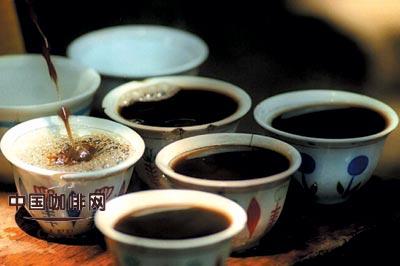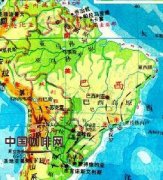Boutique Coffee basic knowledge Fine Coffee beans from Arab East Africa
[Yemen]
The word mocha has many meanings. Around 600 AD, the first coffee beans far away from home-Ethiopia-took root in Yemen on the other side of the Red Sea, and since then the coffee industry has been carried out all over the world. Since the most important port of export for early Yemeni coffee was Mocha Port (now silted), the coffee produced in Yemeni was also called "Mocha" beans; over time, some people began to use "Mocha" as a nickname for coffee, similar to the situation in Java today. Later, because mocha coffee has a chocolate-like aftertaste, the term "mocha" has been extended to refer to a mixture of hot chocolate and coffee. Therefore, the same is "mocha," mocha beans, mocha pot and Italian coffee in mocha coffee, but represents three meanings. Today's Yemen mocha is no different from its ancestors more than a thousand years ago, and it is still the highest level of traditional hand-dried beans-although it varies in size and has a lot of impurities in raw beans. The two most commonly seen origins are Matari and Sanani; Matari beans have more texture, chocolate and acidity, while Sanani beans are more balanced and fragrant. Generally speaking, mocha beans are small in average size, with a wild spicy flavor of ginger, bright and distinctive taste, pleasant fruit acidity, and rich wine-like texture. No wonder they are known as Bordeaux wines in coffee. In mixed coffee, mocha usually plays the role of treble, responsible for stimulating flavor.

[Ethiopia]
The Ethiopian plateau is the birthplace of coffee. In the eastern part, near Harrar, the ancient capital, mocha beans (Harrar,Harari,Harer or Harar) are still produced by traditional drying methods at an altitude of about 2,000 meters above sea level. Halal's texture is medium, with a fruity, wine-like flavor, good Halal's wildness is comparable to the best Yemeni mocha. Dried beans from other regions, such as Gimbi or Ghimbi, Jima,Jimma or Djimah, and Sidamo, are equally wild and wine-like, but less rich in texture and slightly coarse. Washed mocha from West Kimby has the same acid as Harrah's, but packaged with a richer, more balanced feel and heavier texture. For washed beans from the south, such as Sidamo and Gemma, less wine acid is preserved and more tender lemon and flower flavors are substituted. The best of the best is produced in a small, higher area of sidamo called Yirgacheffe, which has a rich taste that brushes through the taste buds and leaves an endless aftertaste. The slightly sour taste is similar to Sumatra and moves downstream from the rich texture. In addition, it adds a unique soft floral fragrance, which is truly the only coffee in the world.
[Kenya]
Kenya's coffee is grown near the Kenyan mountains in the middle and is sometimes named after the capital Nairobi to ensure its quality. Here beans are graded by size, the largest is AA, then A and B, etc., and have nothing to do with the origin, so the same AA beans, quality and characteristics may vary greatly. Except for Yemen and Ethiopia's dry mocha, most coffee on the continent is washed. With state support, Kenya's washed arabica beans are of high average quality and are handled with considerable care. Good Kenyan beans not only have the same strong acid as mocha, stimulate the sides of the tongue, it even has mocha lack of rich texture, in African coffee, it can brew a balanced drink.
[Tanzania]
Most Tanzanian beans are grown in the Mr. Kilimanjaro and Mt. Meru mountains near the northern Kenyan border. The Meru area is commonly referred to as "Krimanjaro," and is occasionally named after the distribution centers Moshi or Arusha. On the south side of the border, a little washed arabica beans are also produced, named after the nearby city of Mbeya or the distribution center of Pare. The classification is similar to Kenya, with English letters distinguishing sizes. Most Tanzanian beans have typical African bean characteristics. The better crimenjaro is similar to regular Kenya, has a thick texture, is usually milder in acidity than Kenya, and evenly stimulates the middle and lateral taste buds at the back of the tongue. It tastes a bit like a tomato or soda. As for the southern beans, they are comparable to the second-grade washed mocha, with a soft and pleasing weak acid, a round taste, and a medium texture. Beans from neighbouring Malawi also have qualities similar to those of Tanzania.
[Uganda]
In the east, on the western slopes of Mr. Elgon, near the Kenyan border, a fairly good Arabica bean, called Bugisu or Bugishu, is produced, with a flavor similar to Kenya, but with a thinner texture.
[Zimbabwe]
Zimbabwe is also a typical East African bean. Good Zimbabwe has a medium texture, but its strong acidity and fruit wine tone can be compared with Kenya, and it also has a hint of black pepper. The best Zimbabwe beans are grown in the eastern region near Mozambique and are graded according to size, with 053 being the highest.
Important Notice :
前街咖啡 FrontStreet Coffee has moved to new addredd:
FrontStreet Coffee Address: 315,Donghua East Road,GuangZhou
Tel:020 38364473
- Prev

Coffee in South America
[Colombia] is the world's second-largest coffee producer, accounting for about 12% of the world's annual production, although much lower than the 30 to 35% of Brazil, most of which are high-quality alpine washed beans. Central Colombia is divided into several valleys by three north-south vertical mountains, of which the central and eastern mountains are the main coffee producing areas. Coffee here is named after the market of distribution,
- Next

The technical term for tasting coffee.
● delightfully sour, sour (Acidity, Acidy) uncomfortable sour (Sour) nose is not bright, not only can not smell the fragrance, even the taste is not as sensitive as usual. Think about it, whenever you catch a cold with a stuffy nose, do you feel more tasteless to eat? Usually sour food smells sour, and the taste we feel is actually a combination of taste and smell.
Related
- Beginners will see the "Coffee pull flower" guide!
- What is the difference between ice blog purified milk and ordinary milk coffee?
- Why is the Philippines the largest producer of crops in Liberia?
- For coffee extraction, should the fine powder be retained?
- How does extracted espresso fill pressed powder? How much strength does it take to press the powder?
- How to make jasmine cold extract coffee? Is the jasmine + latte good?
- Will this little toy really make the coffee taste better? How does Lily Drip affect coffee extraction?
- Will the action of slapping the filter cup also affect coffee extraction?
- What's the difference between powder-to-water ratio and powder-to-liquid ratio?
- What is the Ethiopian local species? What does it have to do with Heirloom native species?

